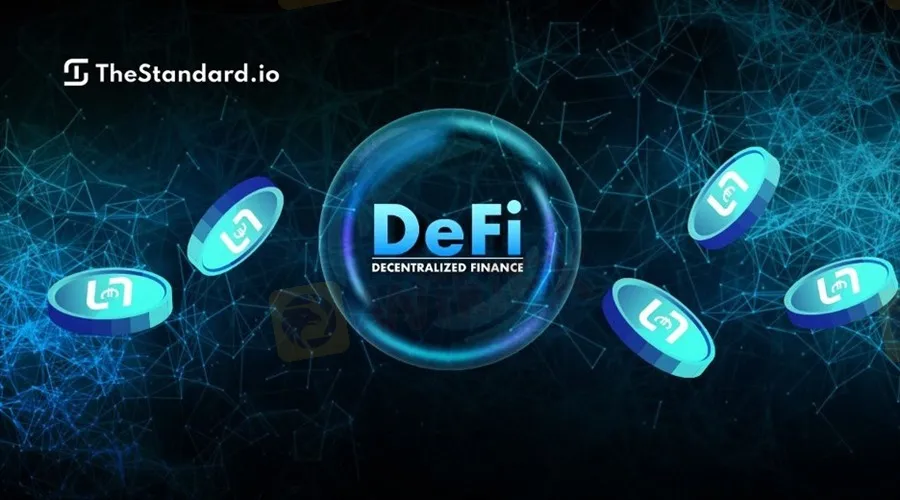简体中文
繁體中文
English
Pусский
日本語
ภาษาไทย
Tiếng Việt
Bahasa Indonesia
Español
हिन्दी
Filippiiniläinen
Français
Deutsch
Português
Türkçe
한국어
العربية
The Standard DAO is Pioneering Stablecoins as the Calls for Regulation Grow Louder
Abstract:What can innovators in the space do to avoid external regulation?

Regulated Stablecoins are Coming
The stablecoin space is a critical part of the cryptocurrency market‘s infrastructure. It underpins the overwhelming majority of fiat denominated trades in the space as well as a significant portion of the volume of the space’s largest decentralized finance (DeFi) protocols. Yet, given its critical nature, it has continued to suffer from a lack of transparency (think USDT) and careless speculation, the latter of which saw one of the biggest algorithmic stablecoins, TerraUSD, collapse in mere weeks.
It is not a surprise then that regulators have taken an interest in seeing what can be done to stabilize the ironically unstable space. For example, in response to a question on stablecoin regulation in May 2022, US Treasury Secretary, Janet Yellen, specifically mentioned USTs decoupling, calling for stablecoin legislation to be passed in the US by the end of 2022.
Since then, there have been proposals put forward including one which might require projects to create and maintain stablecoins, with conditions on how they function required to be met. This could completely eliminate algorithmic stablecoins from the market, and put significant pressure on centralized stablecoins. Whilst this specific example is US-based only, many other jurisdictions are looking to reign in the stablecoin space, and these voices will likely grow louder as demand for stablecoins increase.
Enter TheStandard.io
TheStandard.io proposes an over-collateralized model for crypto stability which incentivises its users to ‘lock-up’ digital assets in ‘Vaults’. These assets can then be used as collateral to acquire loans, at zero interest, by minting tokens pegged to specific fiat currencies such as the dollar or the euro. Borrowers using this framework will also be able to capitalize on inflation, as it will reduce their liability.
TheStandard.io will first launch the sEURO, a stablecoin pegged to the value of the Euro. Early participants will receive a 20% discount when purchasing sEURO as an incentive to launch and grow the stability pool . This special pool is also called the Protocol Controlled Value (PCV), which will be used as a reserve to always buy and sell the stablecoin at it‘s pegged price. Initially, these early participants will be able to ’lock-up EVM compatible tokens,ETH, PAX Gold, wrapped BTC and USDC and more.
Additionally, liquidity building for sEURO/USDC or another pegged stablecoin will begin, allowing users to deposit their newly minted sEURO and stablecoins into The Standard DAOs bonding contract which will be locked in a Uniswap liquidity pool. This will be the initial tool for stabilizing sEURO whilst ensuring those early participants are rewarded. Once stabilized, protocol will change to allow the minting of stablecoins pegged to other fiat currencies.
Sea steading Pioneer and Charter City Visionary Patri Friedman recently joined the TheStandard.io as an Advisor to the project.'
Read a more detailed version of how this process will work in this paper.
Stablecoin Demand Continues to Increase
A framework like that proposed by TheStandard.io might just be what the cryptocurrency space needs for several reasons. Firstly, demand for cryptocurrencies and, in turn, stablecoins, continues to soar, with the top stablecoin, Tether USD (USDT) more than tripling in market capitalization since 2020. This has put USDT in an overwhelmingly dominant position in the market, accounting for over 90% of all stablecoin volume on any given day.
There are concerns that USDT could now be a single point of failure, and combined with its historic lack of transparency, many in the crypto space are understandably worried about the effect a potential collapse could have on the space.
Moreover, the space has seen, with the collapse of TerraUSD taking $14 billion out of the market, the effect of the under tested algorithmic stablecoin market can have on confidence in the space. As this is one of the fastest growing areas of the stablecoin space, countering it with a framework that has a solid basis in economics, might inspire experimentation on more grounded technologies.

Disclaimer:
The views in this article only represent the author's personal views, and do not constitute investment advice on this platform. This platform does not guarantee the accuracy, completeness and timeliness of the information in the article, and will not be liable for any loss caused by the use of or reliance on the information in the article.
Read more

Bank Negara Malaysia Flags 12 New Companies for Unauthorised Activity
Bank Negara Malaysia (BNM) has updated its Financial Consumer Alert List (FCA List) by adding 12 more entities, reinforcing its efforts to warn the public against unregulated financial schemes. Check if your broker made the list!

TradingView Brings Live Market Charts to Telegram Users with New Mini App
TradingView has launched a mini app on Telegram, making it easier for users to track market trends, check price movements, and share charts.

March Oil Production Declines: How Is the Market Reacting?
Oil production cuts in March are reshaping the market. Traders are closely watching OPEC+ decisions and supply disruptions, which could impact prices and future production strategies.

How to Calculate Leverage and Margin in the Forex Market
Leverage amplifies both potential profits and risks. Understanding how to calculate leverage and margin helps traders manage risks and avoid forced liquidation.
WikiFX Broker
Latest News
Exposing the Top 5 Scam Brokers of March 2025: A Closer Look by WikiFX
Gold Prices Climb Again – Have Investors Seized the Opportunity?
Webull Launches SMSF Investment Platform with Zero Fees
Australian Regulator Warns of Money Laundering and Fraud Risks in Crypto ATMs
The Withdrawal Trap: How Scam Brokers Lure Victims into Paying More
FCA to Investors: Think Twice Before Trusting These Brokers
Trump\s tariffs: How could they affect the UK and your money
Trump gambles it all on global tariffs he\s wanted for decades
TradingView Brings Live Market Charts to Telegram Users with New Mini App
HTFX Spreads Joy During Eid Charity Event in Jakarta
Currency Calculator







